Mon 22 Jun 2020
Some good news
Posted by DavidMitchell under History, Point Reyes Station, West Marin nature, Wildlife
Comments Off on Some good news
Caveat lectorem: When readers submit comments, they are asked if they want to receive an email alert with a link to new postings on this blog. A number of people have said they do. Thank you. The link is created the moment a posting goes online. Readers who find their way here through that link can see an updated version by simply clicking on the headline above the posting.
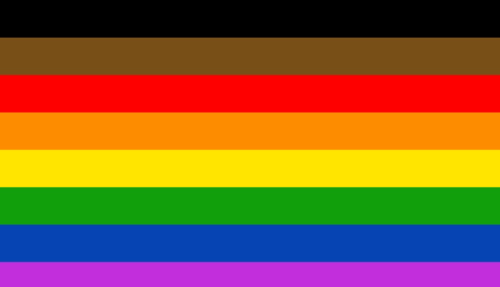
The rainbow-striped LGBTQ pride flag was created in 1978, and three years ago in Philadelphia, a black stripe and a brown stripe were added. The flag initially symbolized support for lesbian, gay, bisexual, transgender, and queer people, who are often discriminated against. The black stripe and the brown stripe were added to explicitly support brown and black LGBTQ people.

Three weeks ago, our board of supervisors voted to fly the Philadelphia flag at county buildings throughout Marin during national Pride Month, which is June. I first saw it last week flying in front of the firehouse and sheriff’s substation in Point Reyes Station. Few other people seem to have noticed; today while I was doing my “essential business” at the Palace Market, the post office, the gas station, and the pharmacy, I didn’t encounter anyone who was aware of the flag flying in town. (Photo by Lynn Axelrod Mitchell)
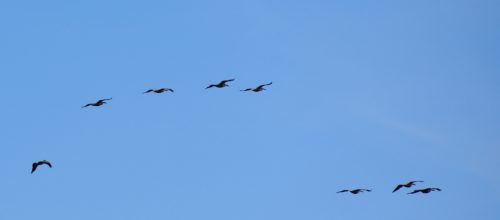
A flock of Brown Pelicans over Mitchell cabin Sunday evening, probably headed for Drakes Estero.
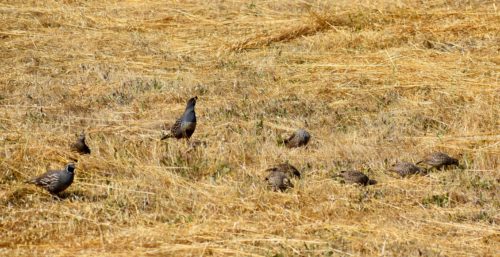
A family of quail in our field Sunday. Perhaps because quail once had a reputation for being particularly amorous, “quail” in times past also was a word for “harlot.” In “Troilus and Cressida,” for example, Shakespeare wrote that Agamemnon is “an honest fellow and one who loves quails.”
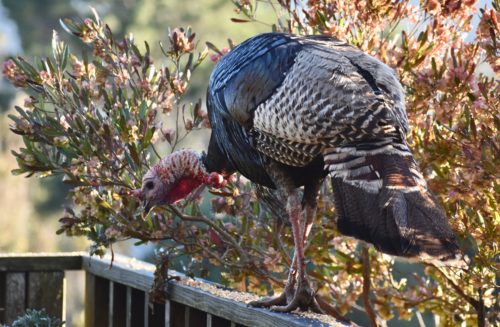
A female wild turkey landed on the railing of our deck Friday to partake of seeds we’d scattered there for other, smaller birds.
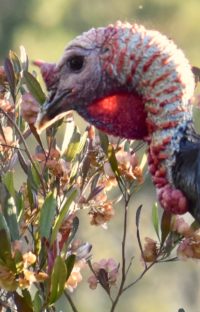
It would be hard to imagine an uglier neck than a wild turkey’s, unless you’re another wild turkey. “When the male turkey gets to courting the hens,” the Audubon Society reports, “extra blood rushes in, and the wattle glows bright scarlet for maximum visual impact.”
The wattle consists of a “wrinkly mass of bumpy, warty-looking red skin,” Audubon notes. “On a hot day, with the sun bearing down, the bare skin of neck and wattle helps release excess heat. Birds don’t sweat.”

No Responses to “ Some good news ”
Sorry, comments for this entry are closed at this time.